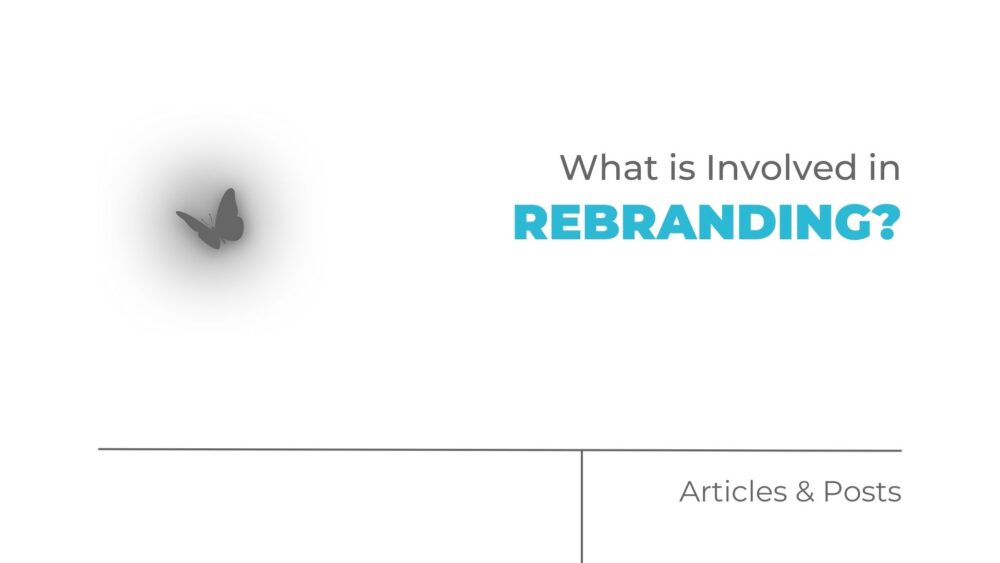Rebranding: When it’s done well, it looks easy, seamless, amazing.
But a poor rebranding job will leave customers confused.
Rebranding involves much more than just tweaking a logo or changing a tagline.
But what exactly IS involved in Rebranding?
Rebranding is a strategic comprehensive process that encompasses:
- redefining the company’s mission, vision, and values
- redesigning the visual elements like web design, logos, and color schemes
- restructuring marketing strategies.
It often entails a significant shift in company culture, all aimed at better aligning the business image with its evolving goals and target market.
What are the steps in rebranding?
Rebranding is a multi-step process that involves careful planning, research, and execution.
It is, for larger companies, a monumental task.
Take Twitter, for example:
While the specific steps may vary depending on the scope and scale of the rebranding project, here’s a general framework to get you started:
1. Conduct a brand audit
Start by assessing your current brand identity, including your visual elements, messaging, and overall brand perception.
Identify what’s working well and what needs improvement.
2. Define your objectives and target audience
Clearly articulate your rebranding goals.
Are you aiming to attract a new demographic, modernize your brand image, or reposition yourself in the market?
Understanding your target audience is essential for shaping your brand strategy.
3. Research and gather insights
Conduct market research to gain a deeper understanding of your customers, competitors, and industry trends.
Consider surveying your audience, analyzing market data, and studying successful rebranding case studies.
4. Develop a brand strategy
Based on your research findings, develop a comprehensive rebranding strategy that encompasses your brand’s new positioning, messaging framework, visual identity, and tone of voice.
Ensure that your new brand aligns with your business values and resonates with your target audience.
5. Design your new brand identity
This step involves creating a visual representation of your brand through logo design, color palette, typography, and overall aesthetics.
There are lots of graphic design tools experts use to help them with this.
Collaborating with a creative agency well-versed in both web design and branding can ensure a cohesive brand identity that extends to your website.
6. Communicate the change
It’s essential to communicate your rebranding efforts to your audience effectively.
This can include creating a press release, updating your website and social media profiles, and informing your customers via email or mail.
Dunkin’ did a great job with this across the country – from Atlanta to Seattle, everyone say that now, “America runs on Dunkin.”
7. Implement the new brand
Once all the pieces are in place, it’s time to launch your rebrand.
This may involve updating all marketing materials, signage, and digital assets to reflect your new brand identity.
You want to help your current customers transition comfortably while you open yourself up to new clients as well.
How do you prepare for rebranding?
Preparing for a rebranding effort requires careful planning and consideration. Here are some essential steps to take:
- Set clear goals.
- Communicate internally with your team.
- Determine a realistic budget and timeline.
Lastly, collaborate with professionals.
Partnering with a creative graphic design and advertising agency that specializes in both web design and branding can provide valuable expertise and guidance throughout the rebranding journey.
Remember, rebranding is not a one-time event but an ongoing process.
Regularly reassess and refine your brand strategy to ensure it remains relevant and resonates with your audience.
The Johnson and Jonson Rebrand
Johnson & Johnson’s new branding initiative aimed to unify all sub-brands under a single, cohesive corporate brand.
Through the use of a modernized logo, simplified color scheme, and a “renewed focus” on their mission to blend heart, science, and ingenuity, Johnson & Johnson is repositioning itself.
Rob and Don’s initial reaction is that it’s kind of weird.
“It doesn’t scream No More Tears.” (Don)
But they skipped a step.
You have to be careful with rebranding and losing some of the character that was associated with their original logos and marks.
We think this is really important to keep in mind when rebranding.
At the End of the Day
Rebranding, when executed with thoughtful planning, comprehensive research, and effective communication, can breathe new life into a company, realigning it with its evolving objectives and market dynamics.
As witnessed in the Johnson & Johnson example, the process can be complex and may even lead to unforeseen challenges.
However, a well-executed rebrand can serve as a powerful tool for growth, change, and reinvention.
Remember, the process doesn’t end with the launch; it requires continuous assessment to ensure its relevance and resonance with your audience.


Comments are closed.